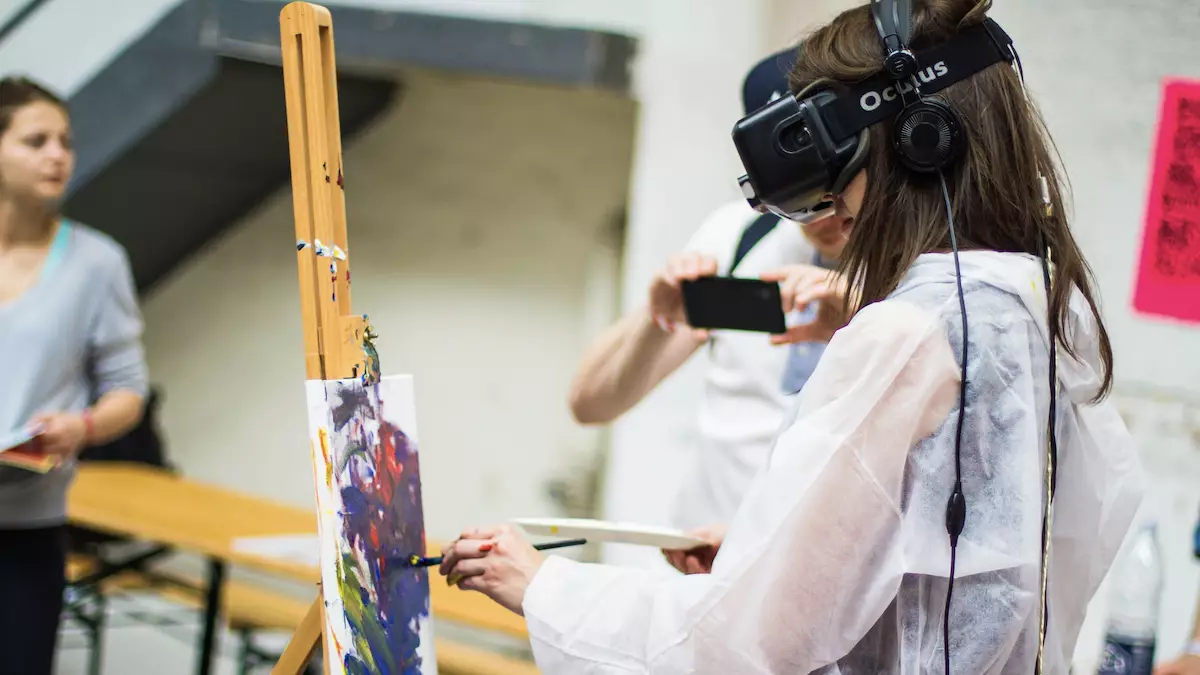Virtual Reality (VR) and Augmented Reality (AR) have revolutionized various industries, offering immersive experiences and new possibilities for branding, gaming, e-commerce, and education. As these technologies rapidly evolve, it becomes essential for developers to stay up-to-date with the latest tools, best practices, and programming languages to succeed in this field. This article explores the diverse programming languages used in VR and AR development, the availability of learning resources, the difference between AR and VR, and the potential business applications of these technologies.
Developing VR and AR applications requires familiarity with a range of programming languages. Some of the most popular programming languages for VR and AR development include C#, UnityScript, Lua, and WebGL.
- C#: C# is widely used in game development and offers an extensive library of tools and resources. It is the primary programming language for the Unity engine, which is a popular choice for creating VR and AR experiences.
- UnityScript: UnityScript is a scripting language based on JavaScript and is used with the Unity engine. It provides an intuitive and user-friendly interface, making it easier for developers to create VR and AR applications.
- Lua: Lua is a lightweight and fast programming language commonly used in video game development. It is suitable for AR and VR applications due to its ability to run on devices with low computing power.
- WebGL: WebGL is a cross-platform framework that enables developers to create interactive experiences for the web. It is an ideal choice for developing VR and AR applications that can be accessed through web browsers.
The availability of learning resources is crucial for developers looking to venture into VR and AR development. Fortunately, there are numerous online tutorials, courses, and documentation available for popular VR and AR platforms. These resources provide valuable insights, step-by-step guides, and hands-on practice to enhance the learning process. Additionally, seeking help and guidance from experienced developers when faced with programming challenges can expedite the learning journey.
AR and VR technologies may seem similar, but they offer distinct experiences. AR overlays digital information onto the real world, enhancing the user’s real-world experience. It is most commonly used on mobile devices, such as smartphones, and AR glasses or headsets like Google Glass or Microsoft HoloLens. VR, on the other hand, creates a computer-generated artificial environment that completely immerses users in a simulated world using headsets, sensors, and other peripherals. Understanding this difference is essential when considering the potential applications and limitations of each technology.
VR and AR technologies have the potential to transform various industries, including healthcare, aviation, gaming, education, and more. For example, VR can be used for training surgeons without any actual risk to patients, while AR can provide real-time guidance in complex maintenance tasks. The technology behind VR and AR is constantly improving, making it more accessible and cost-effective for businesses to leverage its benefits. However, it is crucial to approach VR and AR with a fresh and innovative mindset, imagining entirely new business processes that can utilize these advanced technologies rather than simply improving existing applications.
Virtual Reality plays a crucial role in the concept of the metaverse, an interconnected virtual space where users can interact with each other and digital objects. Creating immersive experiences within the metaverse requires advanced technologies like cloud computing, AI, and networking. Companies like Nvidia and Microsoft are actively investing in VR technology to position themselves as portals to the metaverse. Microsoft’s Mesh platform, for instance, offers virtual office spaces and collaboration environments like “One Accenture Park” for onboarding new hires. While we are not yet in a full-fledged metaverse, these examples demonstrate how VR can create immersive and collaborative experiences.
As VR and AR become more commonplace, companies must develop a clear understanding of these technologies to leverage their benefits. It is important for IT professionals to collaborate with business units to successfully implement VR and AR solutions. Although there are still challenges to overcome, such as technical limitations and affordability, the future for VR and AR is promising. These immersive technologies have the potential to revolutionize how we work, play, and live, creating exciting and engaging user experiences. The demand for programmers with VR and AR skills will continue to grow as more companies explore opportunities to incorporate these technologies into their operations.
VR and AR development require a range of programming languages, including C#, UnityScript, Lua, and WebGL. Learning resources, such as online tutorials and courses, play a crucial role in mastering VR and AR development. AR overlays digital information onto the real world, while VR immerses users in a simulated environment. The evolving technologies behind VR and AR offer immense potential for businesses to create innovative applications. Additionally, VR contributes to the concept of the metaverse, which promises interconnected virtual experiences. As technology progresses, the demand for skilled VR and AR developers will continue to grow, shaping the future of various industries.


Leave a Reply